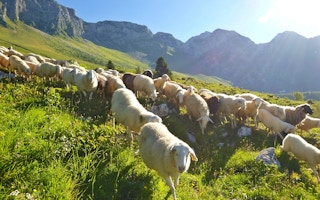Its image of lush green fields and skies unpolluted by the climate-changing greenhouse gases of heavy industry is well-known, but the reality of Ireland’s household pollution is a little different.
The latest research shows that carbon emissions from Irish homes are the highest in the 28-member European Union, mainly due to the large-scale use of coal, peat and oil.
A report by the Sustainable Energy Authority of Ireland (SEAI), a government-funded body which promotes moves towards renewable energy, says average emissions of CO2 per household in Ireland are the worst in the EU, well over 50 per cent higher than the EU average.
“Between 2014 and 2016, CO2 emissions from the (household) sector increased by almost 7 per cent, having fallen by almost a quarter between 2005 and 2014”, says the report.
Ireland was badly hit by the recession of 2008 but in recent years its economy has been growing strongly.
The SEAI study says a rise in disposable incomes in recent years, together with a fall in oil prices, has led to higher energy consumption.
Ireland’s population has grown substantially over the past 20 years, from around 3.8m to 4.8m. The report says that along with the rise in population, the number of households has also increased—to 1.7m in 2016, an almost 40 per cent rise since the turn of the century.
Not only has the number of households been increasing; the SEAI says the size of the average house has also been growing—meaning there is a larger area to heat.
“In 2016 our homes accounted for roughly one quarter of Ireland’s total energy use, costing Irish householders €3.4bn”, says the study.
Lack of insulation
The SEAI calculates that total carbon emissions from the household sector are nearly 10m tonnes a year.
Jim Scheer, SEAI’s head of energy research, says that one of the big problems is the lack of insulation in a large number of older houses and that a great deal of energy-related upgrading work is required.
“A move away from our over-reliance on fossil fuels is essential, alongside a move toward more significant energy efficiency improvements in the home, whether it be a cottage, semi-detached or an apartment”, says Scheer.
Space heating, followed by the heating of water, accounts for most energy use in the average home in Ireland.
Short of information
The SEAI says the government has provided funds for the upgrade or retrofit of more than 375,000 households over the last 18 years, but householders are often ill-informed about both the cost savings and the wider environmental benefits of upgrading and insulating their properties.
Overall, Ireland—though it has little heavy industry and is still relatively under-populated by EU standards—has among the highest per capita carbon emissions in Europe.
This is mainly due to the country’s agricultural sector, with flatulence from the nearly 7m cattle in Ireland accounting for a large part of the emissions total.
At present the government is continuing to push ahead with plans for a substantial increase in cattle numbers, though this is likely to mean the country will fall well short of achieving EU carbon emission reduction targets.
Government critics point out that if these targets are not met, then Ireland will be liable to be fined millions of euros by the EU.
This story was published with permission from Climate News Network.










